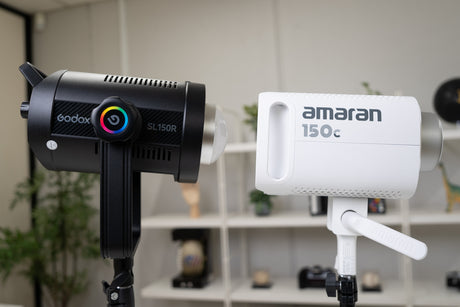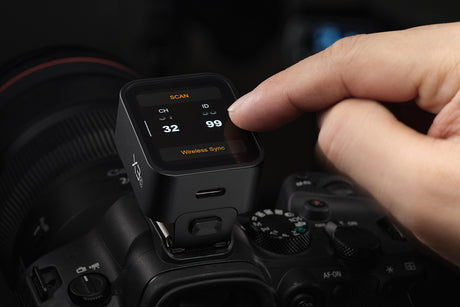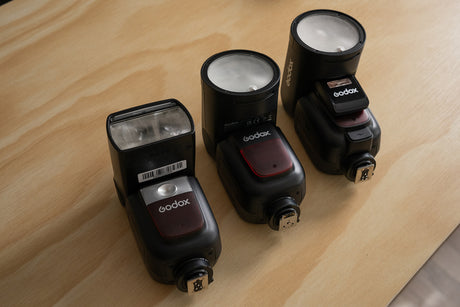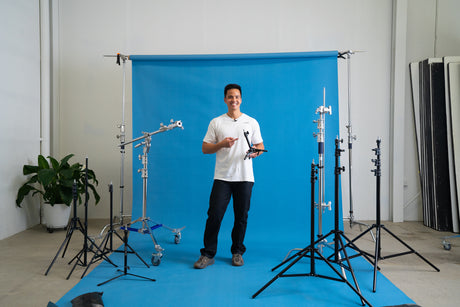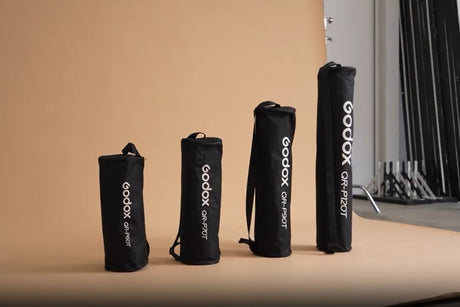On hand is a flagship product of NiSi. It is an adjustable ND filter exhibited in PhotoKina Expo, as well as the first ND filter with an adjustable range of 4-500.
Firstly,the frame of this top-level filter uses ultra-thin iron openwork frame. Metal material has great shock and deformation resistance that protect the lenses from attrition. Holding the lenses in my hand,there is a coating on the surface. it has very nice hand feel. They are anti-skid and fingerprint will not be left on them. NiSi uses superior metal material on the best filters. Superior metal material is not only a symbol of quality but also the feature that top filters should have.
So what are the optical advantages of these lenses? After gathering some information, we have known that this ND4-500 lens applies the material which is made in Japan can reduce the light efficiently. Besides, this ND lens, for the first time, is coated with double-faced 12-multi-layer intensified films which can effectively reduce the diffuse reflection on the surface of the lens while reducing the visual effect caused by reduced light transmission. In particular, this super lens also optimises the “black cross” phenomenon, which is commonly found in ordinary ND lenses. Actually, the annoying “black cross” does not occur during the test.
This lens applies multi-deck coating technique. The coating can be seen under illumination, and is very beautiful. In real tests, I think the coating is pretty good. The 12-layer-ulrathin coating also shows NiSi’s technical strength. I am really looking forward to it.
Then we should talk about the second patent of this ND filter. It is the grayscale adjustment device. On the other side of the frame, I found an interesting design. A rotatable handle is put in there. This handle is used to adjust the decrease volume of light. This design is also a world’s first design. I think this handle is more flexible than what we used before. You just have to spin the handle gently. That avoids collision damage. The third patent lies in here, too. When you turn he handle to the highest or lowest degree, the frame will be locked automatically. This is called automatic closing adjustment technology. This kind of technology can control the lens within a certain range. When you turn to the cu-off point, it will stop. The frame won’t spin unrestrictedly. It facilitate s those photographers who don’t like to watch the lens while adjusting and avoid unnecessary misoperation.
The back of the top-level lens is designed thick. The back lens is deep depressed, avoiding the danger of contacting lens. The screw part of the filter is made of wearable metal material, which can effectively reduce excessive wear with lens screw. The editor specially tested the feeling of screwing the filter to lens. So long as you align the screw of filter to that of lens, you will screw without difficulty or adverse conditions such as joint stuck or excessive resistance. The editor reminds everybody, please screw lens fast for safe handling.
Before introducing the using effect of the lens, the editor will simply popularise what ND light reducing filter is. ND filter is the abbreviation of Neutral Density, which is a kind of light reducing filter. Its formal name is neutral grayscale light reducing filter. The lens itself presents gray tone, which is a kind of filter that reduces lighting by gray layer. Then what is the role of the filter? Let’s take an easy example. A photographer wants to shoot with slower shutter speed in the day or environment of strong light, such as shooting water flow, to present a soft effect like silk. Such an effect can only be achieved by reducing ISO or stopping down to increase time of exposure. However, we often see that the shutter speed is still too high to shoot low speed effect; even we stop down very much (sometimes minimum aperture). Sometimes the speed can be reduced reluctantly but too small aperture cannot guarantee picture quality. The problem sounds a little extreme, but it is very common for photographers who often shoot scenery or special subjects. At this time, we need an additional lens to “block” light artificially. So the ND filter is working again, It can reduce the light effectively, lengthening the exposure time, and won’t change the image color. According to the ability of obstructing the light, ND filter can be divided in to several kinds. Such as ND 2, this kind of ND filter can stop half of the light, in other words, it can slow up a shutter speed or enlarge an aperture size. Similarly, ND 4 can reduce the light to 1/4 of the volume, so it slow up double shutter speed or enlarge twice aperture size. ND 8 can be inferred in the same way. So, it is not hard to see that the number behind ND represents the ability of obstructing the light. The filter we test this time is from 4 to 500, in other words, 1/4 to 1/500 decrease of the light. It’s really powerful. Strictly speaking, ND filter is not a real filter. Its ability of reducing various wavelengths of light is even, not only just reducing. It doesn’t filter different wavelengths so it won’t have influence on the color of the picture. After having a simple knowledge of ND, we shall have a look on the effectiveness of this 4-500 adjustable filter. ‘Tunable’ means manufacturers put lenses with different grey scale together. That is far more convenient than filters with simple grey scale.
Photographers can experience some bad weather or environment. At those conditions, lens’s self-protection reveals. Now I will test it for you.
We put this lens with its package into a filled sink. After washing for a minute, we open the box and find that there is no water in it. That means the sealing ring is working. On the surface of the washed lens, water is divided into small beads. Slightly shaking the lens, most of the beads are off the surface. This means the coating is well-waterproof. It doesn’t absorb too much water and it can be easily cleaned. I wipe the lens a few times and make it back to normal. ND lens contributes a lot to landscape shots. Photographers can use ND to take wonderful pictures in the situations above. No matter when was the picture taken, in dawn or dusk, it looks quiet and peaceful by the power of ND. I took this ND out to see its actual ability.
Summary: This is the latest product NiSi produced in 2012. We can find many new breaks on it. It is a flagship which NiSi paid concentrated attention to. I think this ND filter has very good effectiveness on reducing the volume of light. In the same time, it can regulate in a wild range, basically meeting major demand of outdoor shooting. In optics, its coatings are up to 12 multi layers, making the image loss to the minimum. I believe this product could gain trust of professional photographers after being listed. Its quality is perfect.
Advantages:
1. Advanced optics technique, top-class quality, tiny impacts on images.
2. Good innovation on designs.
3. Wild range on adjustment.
Disadvantages:
Protection against oil is common.




